The best urea fertilizer for rice is Urea Shock, which is produced in liquid form using nanotechnology. This fertilizer contains 46% nitrogen, making it highly effective in promoting green growth and increasing rice yield. The ideal time to apply this fertilizer is during the transplanting of seedlings to the paddy field and 20 to 30 days before the emergence of the rice panicles. By using Urea Shock at these critical growth stages, you can maximize the productivity of your rice crop.
Urea fertilizer is one of the most widely used nitrogen-based fertilizers for the growth of various plants, including rice. Due to its high nitrogen content, this fertilizer helps in fast growth and improves the quality of the plant’s leaves and stems. Proper use of urea fertilizer for rice can lead to increased crop yield and enhanced plant resistance to diseases and adverse environmental conditions.
Key points in using urea fertilizer for rice:
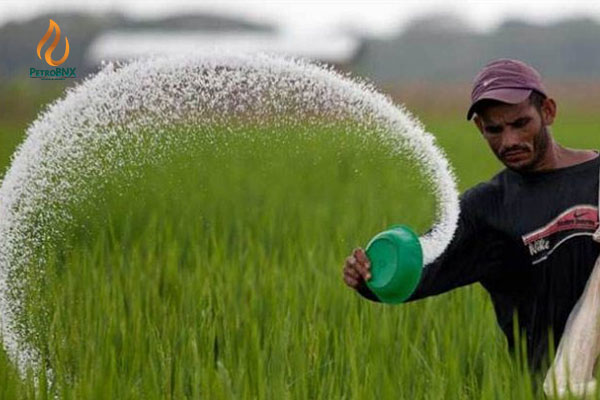
- Application Rate: The amount of urea fertilizer required depends on soil conditions and the plant’s needs. Generally, it is used in two stages of the plant’s growth:
- Seedling Stage: In this stage, using 200 to 250 kilograms of urea per hectare is usually sufficient.
- Growth Stage: In this stage, 250 to 300 kilograms of urea per hectare is needed.
- Timing: It is best to apply urea fertilizer at the right times to maximize its absorption by the plant. For instance, after transplanting the seedlings and during the growth stages, especially when the plant needs more nitrogen.
- Application Method: Urea can be applied either through spraying or incorporated into the soil. Typically, urea is added to the soil and then made available to the roots through proper irrigation.
- Negative Effects: Excessive use of urea can lead to environmental damage and soil degradation. Additionally, excessive nitrogen may result in excessive leaf growth and reduced rice cluster formation.
- Combination with Other Fertilizers: To improve crop performance and balance nutrients, urea is often combined with other balanced fertilizers like phosphate and potassium.
How does urea fertilizer work for rice?
Urea fertilizer for rice, also known as white fertilizer, is the most important nitrogenous fertilizer, primarily used to provide nitrogen for rice. All fertilizers containing nitrogen are referred to as nitrogen fertilizers. Nitrogen is part of the NPK elements, which are among the most consumed nutrients for plants. Urea fertilizer for rice is one of the cheapest nitrogen fertilizers, compatible with most soils.
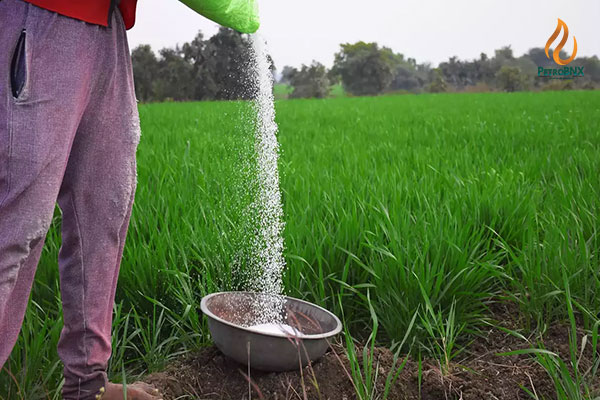
Is urea fertilizer acidic or alkaline?
Urea is neither acidic nor alkaline, is highly soluble, and is almost non-toxic. After application, urea is hydrolyzed (decomposed) in the soil into ammonia and carbon dioxide. The ammonium ion is easily absorbed by the rice roots and acts as a nitrogen source for the plant.
Ammonium nitrate urea, one of the nitrogen-rich urea forms, can be mixed with herbicides and pesticides to combat pests and diseases.
Why should you use urea fertilizer for rice in your paddy fields?
Nitrogen is one of the most important nutrients for plants, including rice, and is present in various chemical fertilizers. Farmers use nitrogen fertilizers to accelerate growth and increase the yield of their crops. One of the most important nitrogen fertilizers is urea for rice.
The amount of protein in rice grains is related to the amount of nitrogen used. Nitrogen is an essential component of amino acids, which are the building blocks of proteins. By absorbing nitrogen from the soil, plants can synthesize amino acids and, ultimately, proteins. For this reason, nitrogen is used in most fertilizer formulations, including the complete fertilizer for rice, Shock.
Irrigation with liquid urea fertilizer in rice paddies
Nitrogen is a component of chlorophyll, which plays a vital role in photosynthesis. The more photosynthesis a plant undergoes, the more its vegetative growth increases.
Fortunately, urea fertilizer for rice, due to its neutral pH, is compatible with various soil types and can be used without any issues, although the application amount should be controlled.
Increasing the size and number of leaves, tillers, and the weight and size of rice grains is directly influenced by nitrogen consumption. With the use of urea fertilizer for rice, phosphorus and potassium absorption from the soil is made easier, and the plant’s resistance to stressful conditions and diseases improves.
Shock 42% nitrogen fertilizer
Shock nitrogen fertilizer is a popular and high-quality product produced in the USA. This fertilizer is a rich source of urea and nitrogen and is easily used in irrigation systems.
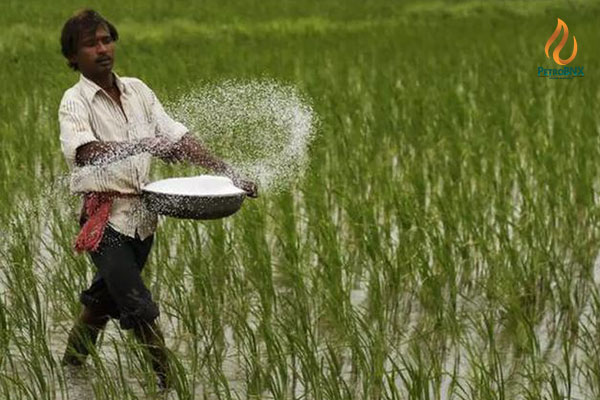
The high purity and exceptional price of Shock nitrogen fertilizer distinguish it from other fertilizers available in the market. In addition to nitrogen, the formulation of this fertilizer contains other micronutrients that enhance nutrient absorption into the plant, improving its biological and biochemical processes.
With this fertilizer, you don’t have to worry about toxicity, salinity, or soil compaction in your rice paddies. This fertilizer provides additional energy for plant growth and is utilized in its biochemical processes.
Shock 42% nitrogen fertilizer Price
250,000 – 2,500,000 Toman To purchase the Shock 42% nitrogen liquid fertilizer, you can place your order by clicking on the product image above and contacting our sales experts.
Signs of urea deficiency in rice
Urea fertilizer for rice is a rich source of nitrogen, and the signs of its deficiency in rice are similar to those of nitrogen deficiency, often occurring during critical growth stages, such as tillering and the beginning of panicle formation.
Common signs of urea deficiency in rice include reduced tillering and seed count, yellowing of older leaves, and the leaves becoming narrower, shorter, and upright. Older leaves, and sometimes all leaves, turn light green and chlorotic at the tips.
Best time to apply urea fertilizer for rice
When is the best time to apply urea fertilizer for rice? Nitrogen fertilizers should be added at the appropriate time and in the recommended amounts to the paddy fields; otherwise, they may be harmful to the rice.
Increasing greenness and growth of rice with liquid nitrogen fertilizer
Avoid applying urea fertilizer directly to rice seedlings, as they can suffer from toxicity and burning when exposed to urea, resulting in reduced rice yield. It is recommended to use a suitable alternative fertilizer like a special rice nursery fertilizer that contains rooting hormones.
The best times to apply white fertilizer for rice are in two stages:
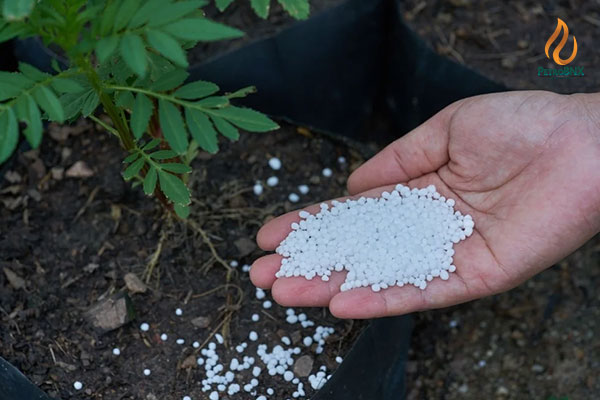
- After transplanting the seedlings, high-nitrogen fertilizer can be used for rice.
- Again, 20 to 30 days before panicle emergence (heading), use this fertilizer. Applying urea fertilizer for rice at the beginning of heading helps increase panicle length and the percentage of fully filled and non-shriveled grains.
In the “Rice Fertilization Table,” as recommended by agricultural experts, we have outlined the fertilizer usage for each stage to achieve the best results. We suggest reading it.
How to apply urea for rice
The nature of urea fertilizer for rice determines how it should be used. If you are using solid urea or granular urea for rice, it should be mixed with soil or sand before application, as its high concentration can lead to plant toxicity.
Granular urea can also be used as a foliar spray, evenly applied to the soil surface, followed by irrigation to prevent wastage and ensure proper release.
Do not combine urea with calcium nitrate, as this will cause undesirable chemical reactions and render the urea application ineffective.
However, the best way to apply urea for rice is by dissolving it in water and using it for irrigation. Shock nitrogen fertilizer can be used in two ways: in the irrigation system or as a foliar spray.
For irrigation, dissolve the required amount in the irrigation ditch or a barrel to ensure it reaches all parts of the field. For foliar spraying, you can mix the fertilizer in a sprayer tank and apply it until the fertilizer drips from the rice.
Amount of urea fertilizer to use for rice
Urea contains the highest nitrogen content among other fertilizers. Nitrogen improves the vegetative growth of rice. The amount of urea fertilizer required for rice depends on the variety of the crop, soil analysis, fertilization method, and environmental conditions. Therefore, it is recommended to determine the urea fertilizer amount based on the advice of an agricultural expert.
Excessive use of urea fertilizer for rice can damage the crop, and it should be used carefully, as high amounts of urea can alter the plant’s growth pattern and have negative effects like soil degradation, reduced water retention capacity, and groundwater contamination. You can refer to the following table for the recommended usage of Shock nitrogen fertilizer:
| Application Method | Amount of Use |
|---|---|
| Foliar spraying for rice fields | 3 to 5 liters per hectare with 400 to 800 liters of water |
| Irrigation dose for rice fields | 10 to 20 liters per hectare as barrel spray |
Final word: Urea fertilizer, by providing the necessary nitrogen for rice, helps it grow healthily and more abundantly, making its benefits undeniable. It also brings greater profitability to farmers.
In this article from PetroBNX, we discussed the amount, method, and best time to apply urea fertilizer for rice, providing valuable insights. We also introduced the best urea fertilizer for rice and how to purchase it.
Best urea fertilizer for rice
One of the high-nitrogen fertilizers is urea for rice, which is also referred to as a high-nitrogen fertilizer. Since nitrogen is one of the three essential macronutrients for plants, including rice, it should be used at various growth stages, especially after transplanting the seedlings to the field. Nitrogen fertilizers for rice help increase the plant’s vegetative growth, improve photosynthesis and chlorophyll production, and play a vital role in the plant’s biochemical processes. One of the high-nitrogen fertilizers containing 42% nitrogen, produced with the latest technology (nano-liquid), is the high-nitrogen fertilizer from the American brand Shock.

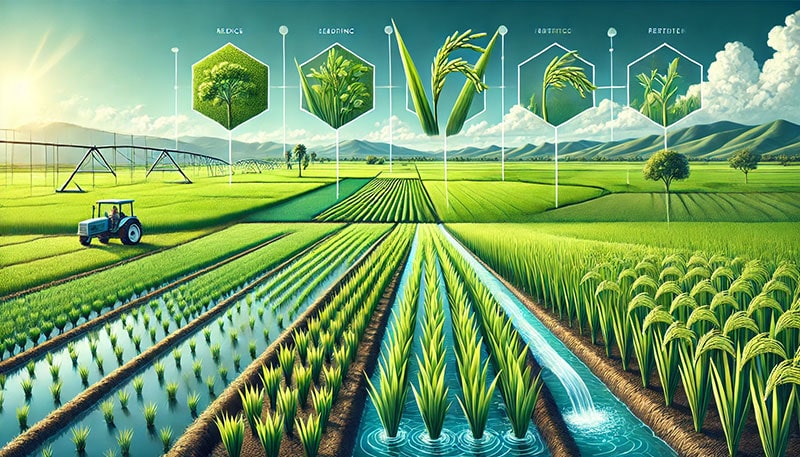
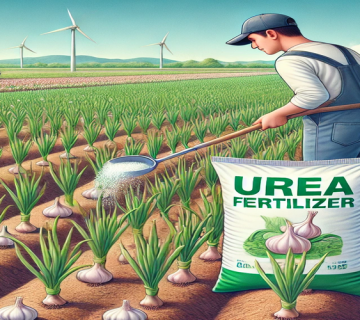
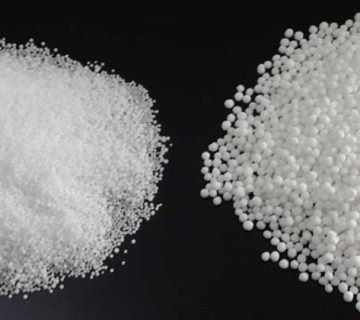

No comment